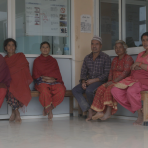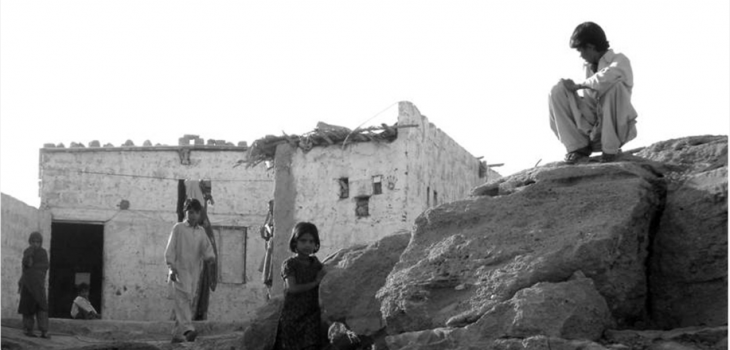By Uzma Khan (IRD Pakistan; Karachi, Pakistan and IRD Global; Singapore, Singapore)
Since 2011, the World Health Organization (WHO) has recommended treating patients affected with drug-resistant tuberculosis (DR-TB) using a clinic- or community-based ambulatory care model. However, low- and middle-income countries (LMICs) continue to struggle to implement this policy into practice. We recently published a study analyzing distance to health services as a factor contributing to poor treatment outcomes in peri-urban and rural areas of Pakistan and discussed pertinent challenges to decentralization of DR-TB care in high TB burden countries.
The race to meet targets
Unfortunately, the global DR-TB situation continues to be alarming with only a third of the estimated cases of multidrug-resistant TB (MDR-TB) started on treatment in 2020. Thus, country TB programs are under pressure from donors and partners to identify missing DR-TB cases. The scale up of molecular diagnostic tests for TB has improved MDR-TB diagnosis, however when uncoupled from adequate laboratory and human resources to monitor and manage patients, close to where they live and work, it can be a recipe for failure. Sadly, such failures cost lives. These gaps in resources lead to several centralized health facilities to serve as treatment sites. For example, in Pakistan, at the start of routine DR-TB care services in the country, people would travel to different cities or even provinces to access the few facilities available to manage DR-TB. With access to rapid molecular tests, the number of treatment sites expanded which improved people’s ability to access care. However, many of these sites were neither close to where patients live, nor adequately equipped to monitor them.
Yes to newer drugs and new regimens but where are the TB laboratory services?
With great enthusiasm, I along with many colleagues have welcomed the introduction of newer drugs and all-oral regimens. Albeit slow, these are now finally recommended for all MDR-TB patients. Yet, this recommendation cannot be appropriately implemented without access to adequate TB laboratory services. It is critical that patients infected with the most resistant bacteria are identified early and put on the correct treatment. This neglect in TB laboratory capacity has been an acceptable norm for far too long. For example, access to drug-susceptibility testing (DST) for fluoroquinolone – a core drug used for the treatment of MDR-TB – continues to be limited to national level or centralized labs.
It seems the TB laboratory network is always at least a step behind in terms of policy and certainly in practice. Now with access to newer drugs, it is imperative that testing for drugs used in these regimens, such as bedaquiline and linezolid, which form the backbone of WHO conforming regimens, be available in LMICs. However, apart from a few national or regional laboratories in high TB burden countries, DST to these drugs remains largely unavailable. To those in a high-income country – with access to the best diagnostics including sequencing – this would seem outrageous, but unfortunately TB patients in many LMICs continue to be managed in the absence of adequate tools to support their treatment.
Standardized approaches and protecting the drugs (NOT the patient)
Globally there is agreement to implement people-centered strategies. However, there is a dearth of investment in local, community-level leadership that includes TB-affected households to provide local solutions to local problems. In the absence of the most basic resources, physicians are not empowered to make reasonable, people-centered decisions. They are trained to deliver care using standardized approaches, unlinked to local realities, while astutely following guidelines. Such practices promote health inequities and further distance TB programs from the seemingly cumbersome and much-needed integrated health delivery to achieve the end TB targets.
For a long time, the TB community has injected fear of abuse of drugs; the misuse by the private sector, the inappropriate regimen designs, all leading to more resistant TB strains and thus the need to ‘protect the drugs.’ While the concerns may be legitimate, the root cause of the problem i.e., drug regulation and access barriers remain unaddressed, and unfortunately the burden of such restrictions is borne by patients who are at times denied better, safer treatment to a curable disease. Living in conditions that limit accessible healthcare, affected individuals mistrust a fragmented system and often initially seek other avenues for care including the unregulated private sector, before finally reaching a designated treatment facility. However, this is often far too late. Thus, an untapped and unregulated sector results in incorrectly treating patients leading to unabated community transmission of highly resistant strains of TB. Further, the TB programs are ill-equipped to trace and track exposed contacts of patients or educate the community to prevent and mitigate these risks.
Dependency on the Global North
DR-TB financing is heavily dependent on the Global North. This has created an inequitable dynamic whereby, instead of patients, affected communities, country implementers being involved in decision making, external donors are in the driving seat, determining decision on key interventions and strategies for investment. The key buzz word is to propose ‘innovative’ solutions; colloquially speaking anything that seems sexy would bring the dollars pouring in. If it doesn’t fit into the local context and doesn’t fill all the identified gaps, that is not the primary decision-making factor. In fact, the donor’s pot only holds enough funds to support something that shows impact and is cost-effective. Thus, without any accountability, people-centered approaches that provide better care to DR-TB patients, alleviates their socioeconomic burden, improves their overall health outcomes and supports the decentralization of DR-TB services, do not make it to the priority list for financing. The most common argument is that the national governments should cover these costs. Agreed, ideally that should be the case, but as donors are well aware, this is far from reality and turning a blind eye to these facts is at best careless and at worst criminal negligence.
Yes, decentralization of DR-TB will require a rethink of the current model and cannot be done in the absence of local voices for input. Thus, decades of neglect can only be addressed by in parallel improvements and investments in community service delivery models.
Image credit: Uzma Khan (consent was taken prior to taking photo)
















